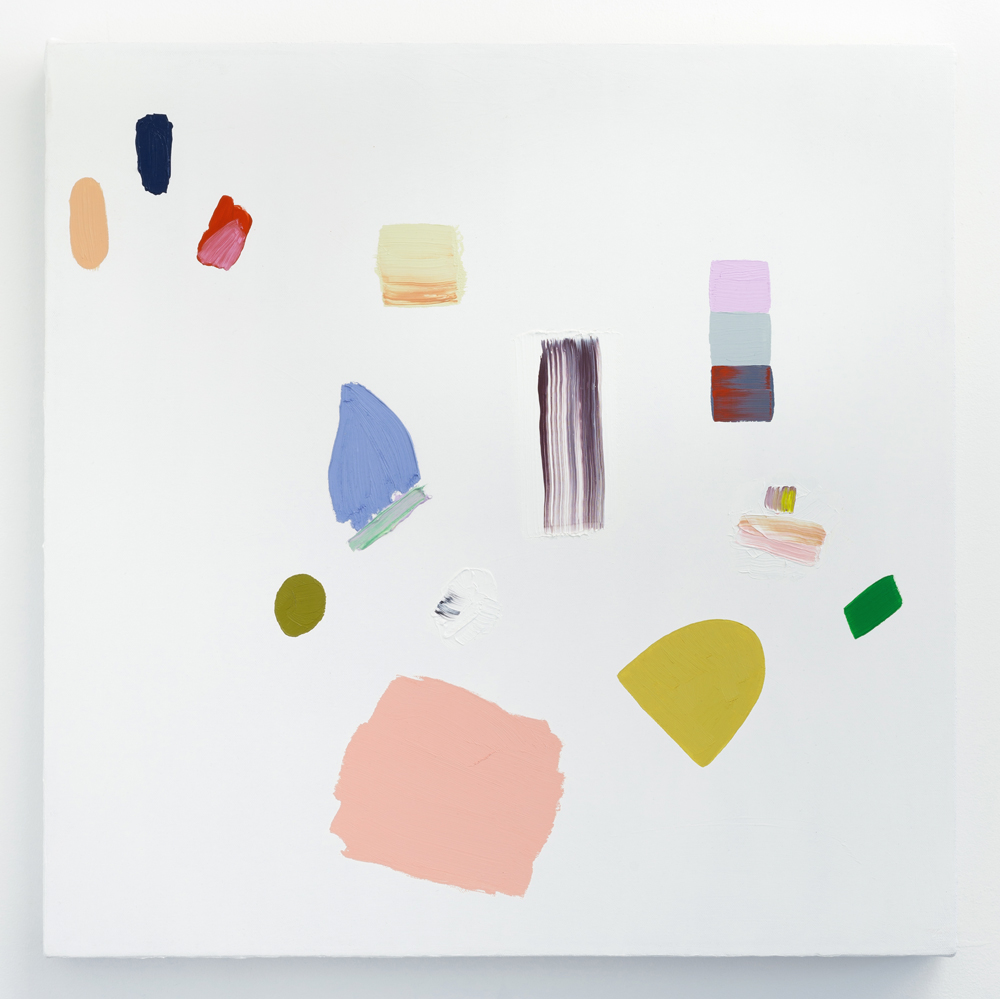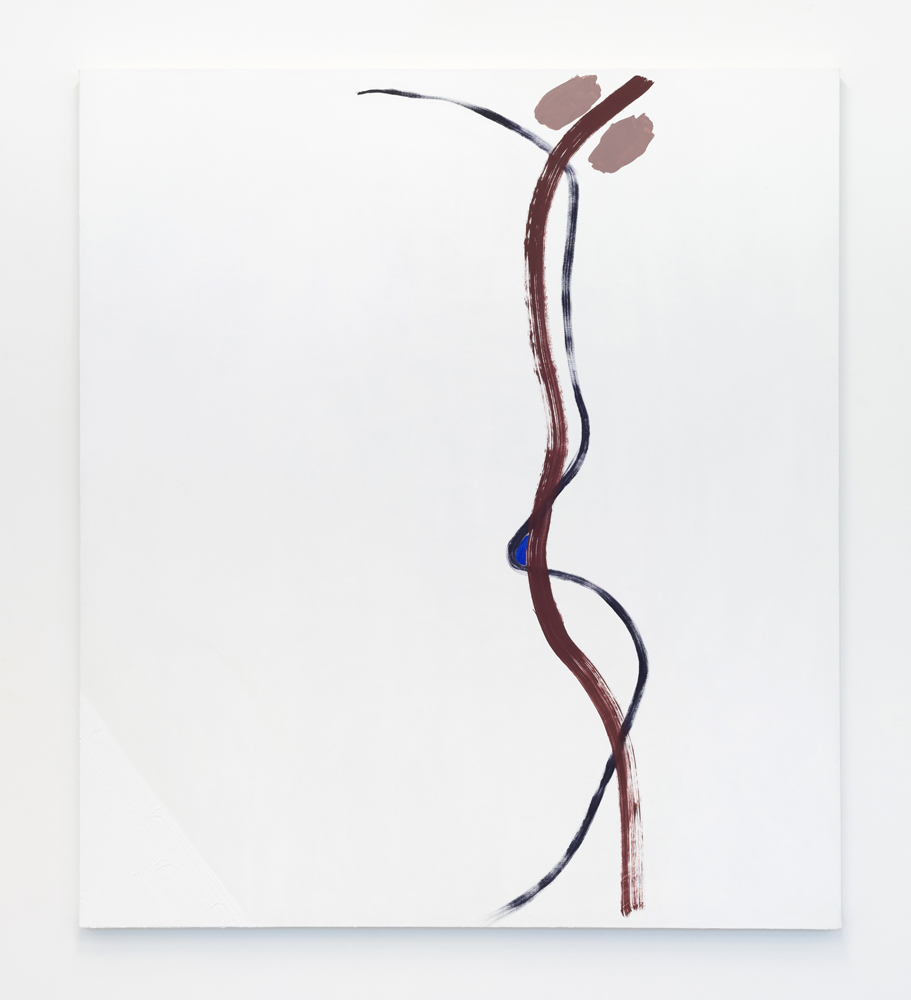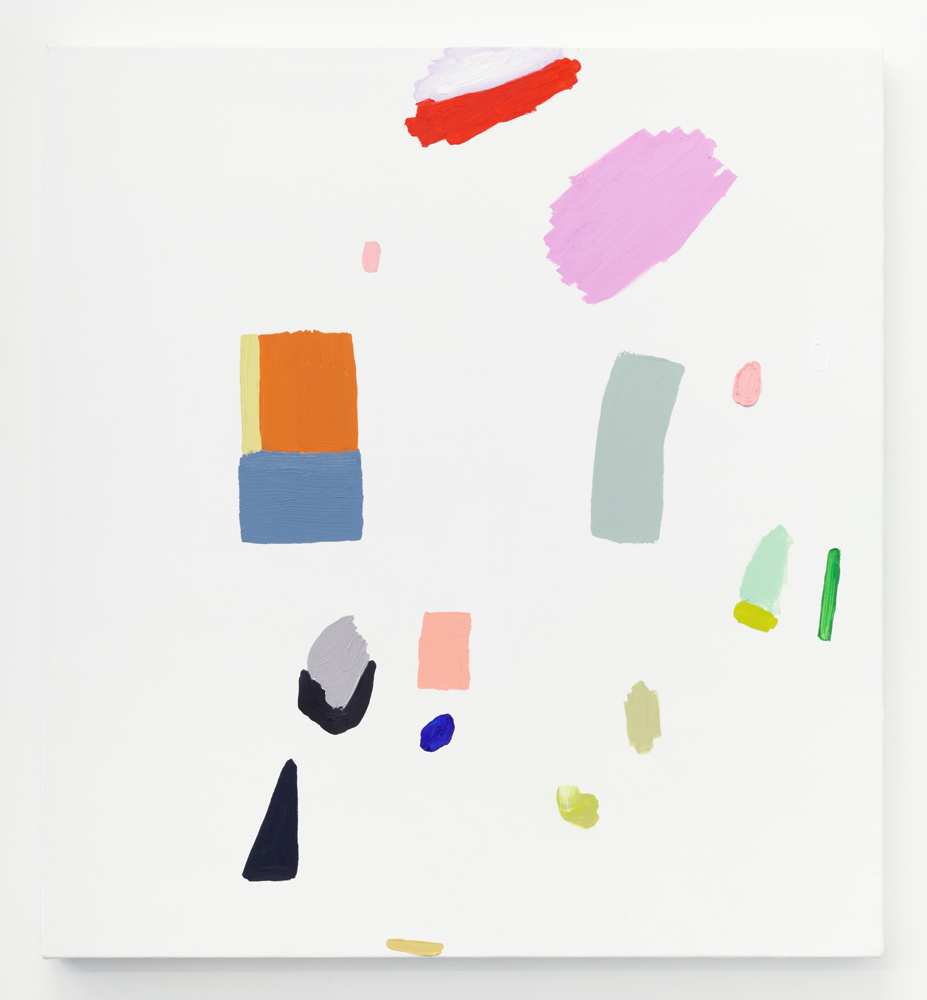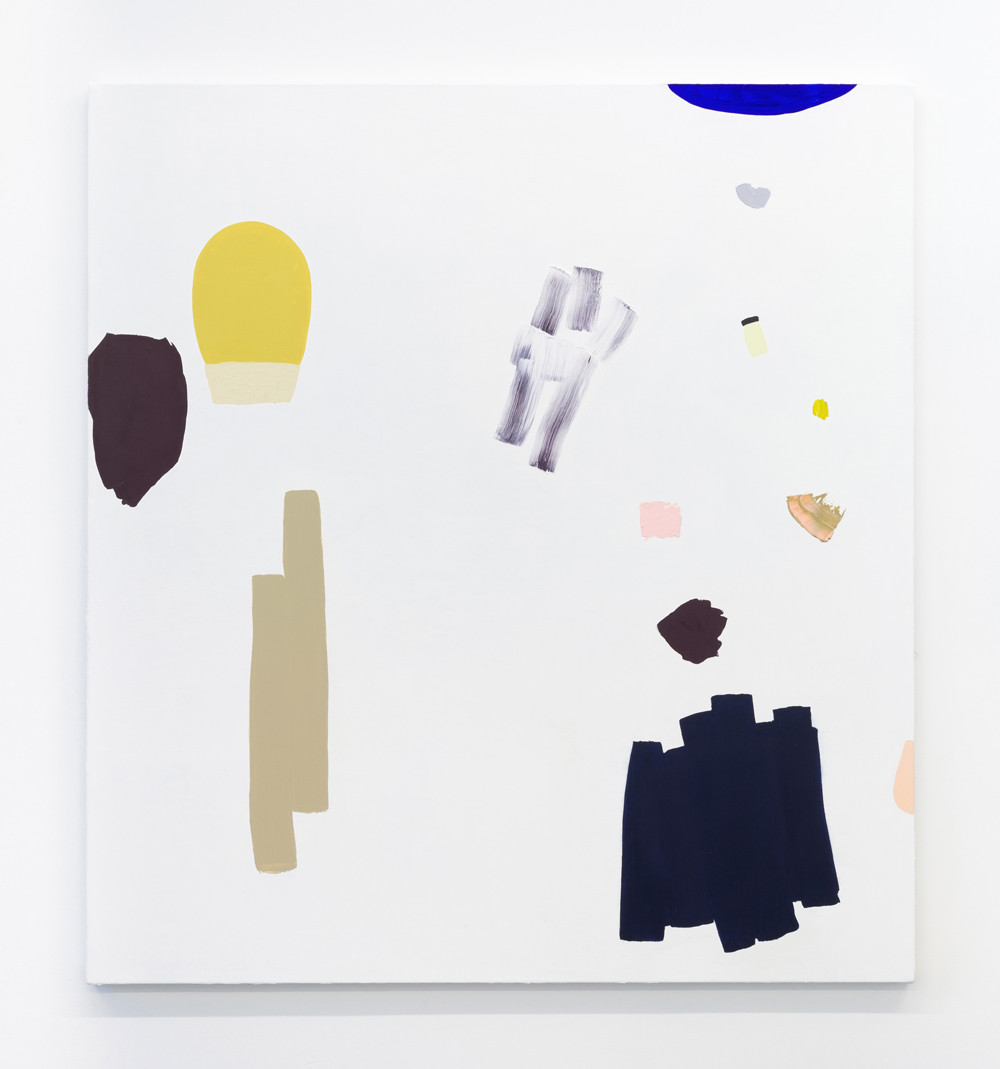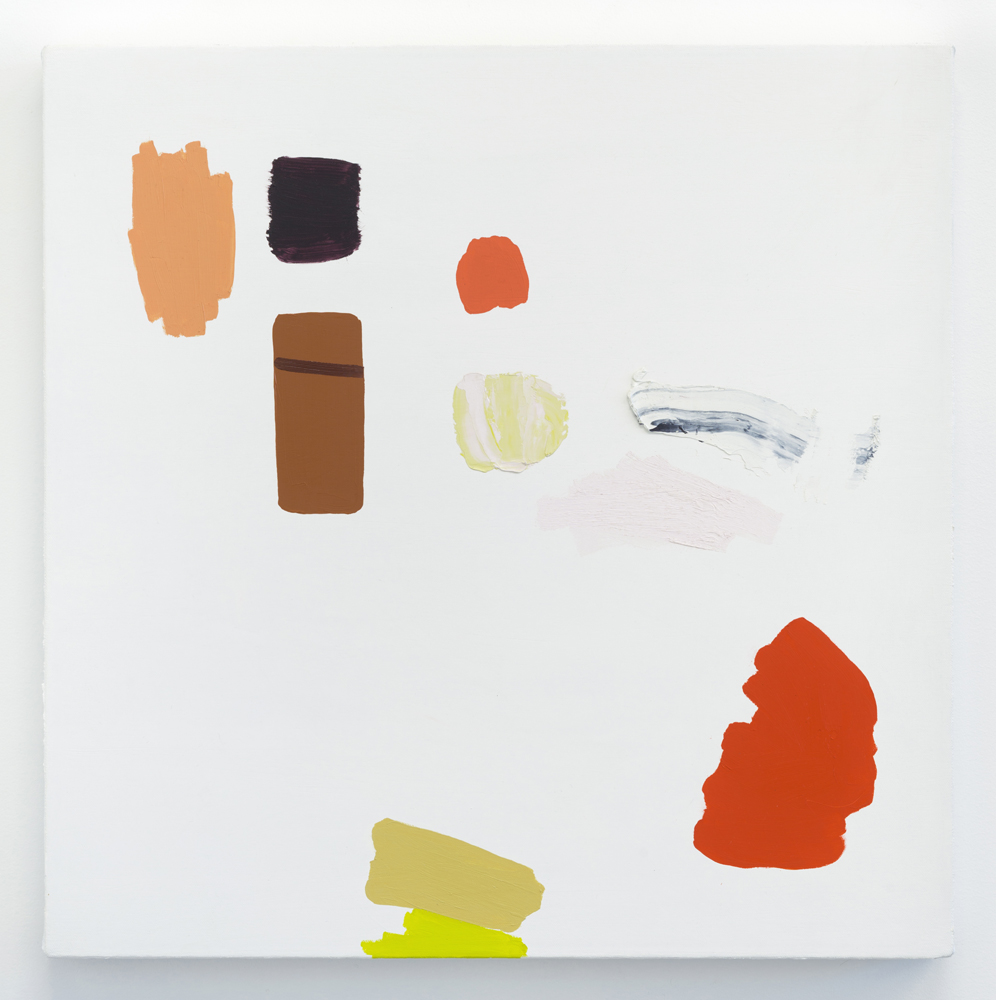Emily Counts, Remastered, 2017, stoneware, 25 (h) x 19 x 18”
There are many spaces to enter into Emily Counts’ current series Form Factor on view at Nationale. An abundance and diversity of patterning, vibrant color choices, textures, and unusual forms, make this work an ever-unfolding visual playground.
Remastered, composed of multiple stacked ceramic forms, reveals Counts’ ability to manipulate her materials in such a way that elements made from the same stuff appear completely different from one another in weight, shape, and texture. At the very top of the work sits a rectangular cube that, because it is only attached to the form below on one side, appears to be flying off of the sculpture. Its placement, as well as the soft pale green hue and uneven lined texture, gives it a nearly weightless quality. It appears as light and delicious as a marshmallow.
Remastered, as with many of Counts’ sculptures, feels like a life force. With each element making up the entirety of the organism, it holds the presence of a living thing. At its base are an array of small ceramic objects, each one different in shape, texture, and color. They peek out from beneath the large blue and red perforated rounded form, which sits under a shiny brown thick pancake shaped piece. Nearly at the top of the sculpture rests a rock shaped object painted to resemble the patterning of Counts’ childhood living room rug.
Initially, the work appears to be precarious, as if the bottom pieces which seem so small and fragile are being crushed by the weighted stack above them, but it is actually these small works that together have the strength to hold up the heavier parts. Similar to the piece at the top of Remastered, the bottom elements, which are surrounded by negative space, give the work an unexpected levity. It is this confluence of solidity and lightness that circles back to the idea of a living form. As with the human body, gravity equals presence, and lightness implies the ability to move freely. We can imagine Remastered continuing to grow and evolve, and with Counts behind the curtain making the magic happen, who knows what is possible.



























